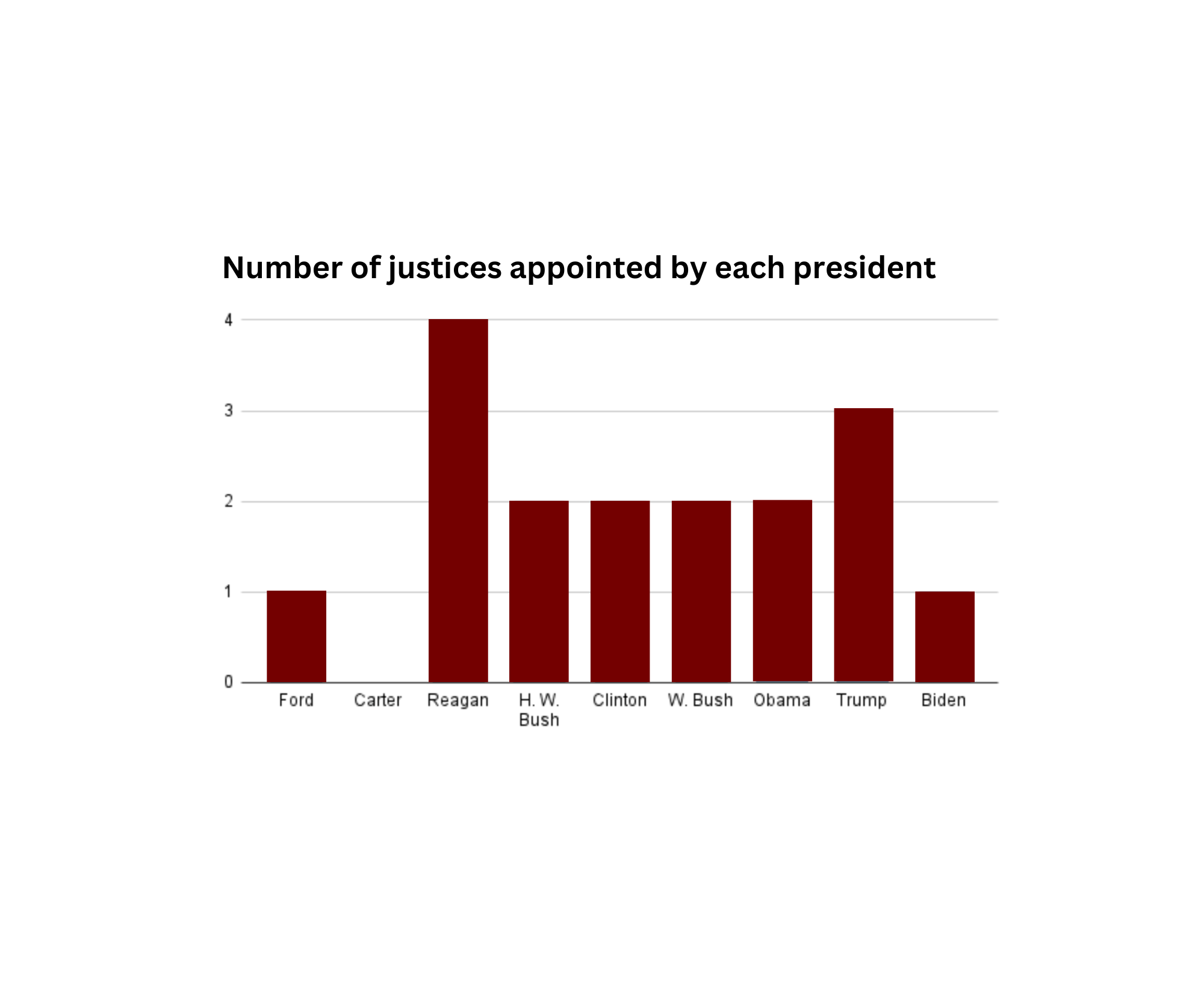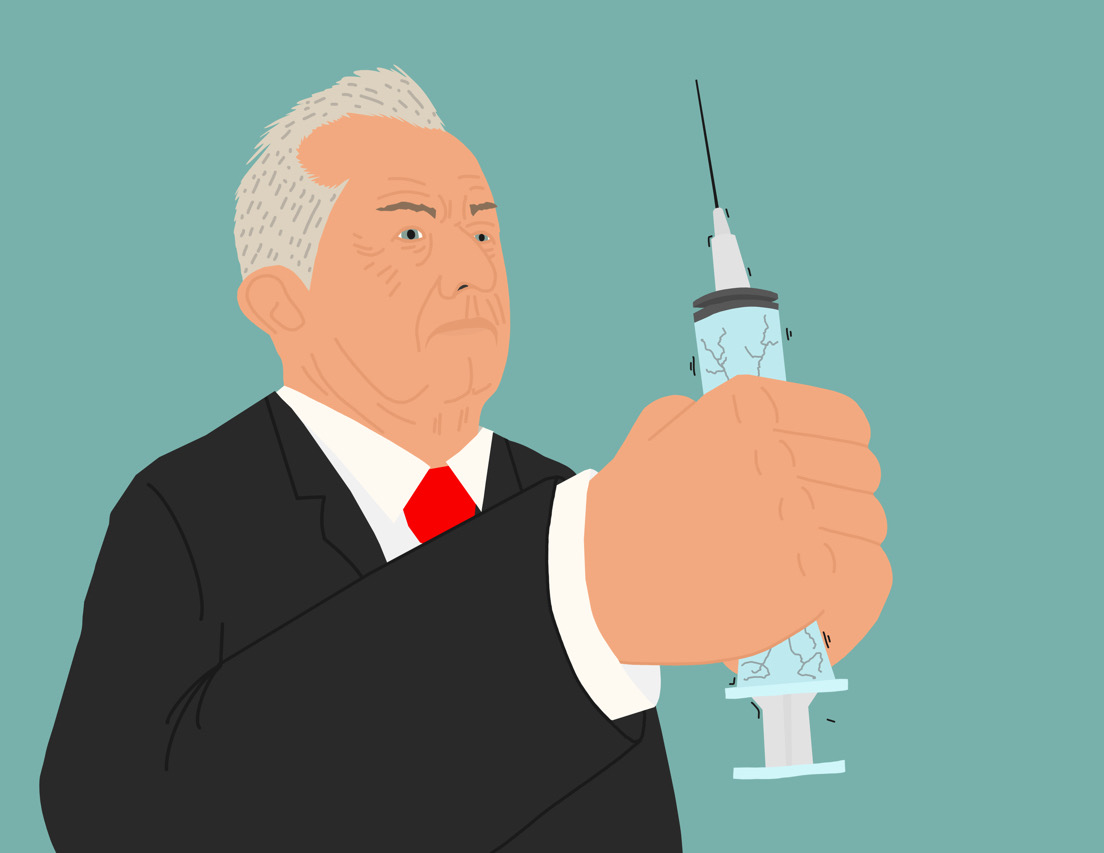Head to Head: Should federal judges have 18-year term limits?

The Supreme Court’s approval rating has plummeted in recent years due to various decisions and actions by its members, resulting in a widespread call to reform the Supreme Court and its processes. However, creating an 18-year term limit on the justices and removing older justices from the Court is impractical, and would disrupt the fabric of our political system for years to come.
Recently, the Supreme Court has become more and more polarized, with fewer “moderate” justices than ever before. This has come with the growing trend of polarization in national politics as a whole. We may see a multitude of decisions reversed by a majority court of different political perspectives. Roe v. Wade has already displayed what could occur with many cases.
This over politicization will lead to an uptick of strategic retirements. Justices Anthony Kennedy and Stephen Breyer have been proof of this phenomenon under the current system. Justices who have been serving for decades could retire, even though showing signs they are feeling healthy. This allows the sitting president to nominate their successor, thus conserving their political ideals through their successor. Term limits exacerbate the problem greatly, as a justice with just a couple years left in their term may resign during an election year to ensure they are also replaced by a justice of the same party. This makes the polarization and politicization of the Supreme Court even worse as well, as it severely compounds the problem the term limits are trying to solve.
Another problem with the potential solution is what to do with the current justices on the Court. Proposed solutions would have them exempt from the term limits, but this creates the potential problem of if many justices either pass away or resign in similar times, leading to a cycle of many justices’ terms ending at the same time. This again is only exacerbating the issues of over politicization the term limits try to solve. Even if current justices weren’t made exempt, it would also cause the same problems as previously stated of multiple justices’ terms coinciding to end in the same month.
In Federalist Paper 78, Alexander Hamilton wrote the justices’ decisions should be independent of their future prospects for a job. With term limits, justices would be looking to succeed their time as a Supreme Court Justice with another position. By making favorable decisions to certain people or organizations, the justice would be offered favorable opportunities for them after their term in the Supreme Court. This completely destroys the credibility of justices in the Court as they could be acting in their own future interests instead of the interests of the nation and the Constitution, eliminating the independence intended for the Supreme Court.
A goal of term limits is to make appointments become much more regular and scheduled under each president to allow equal opportunity for each president to nominate an equal number of justices. This would make the Supreme Court seem more like a political body instead of an independent entity, as it would give the executive & legislative branches far greater and more frequent influence on the Supreme Court.
While term limits aim to address a crucial issue, it is looking at the wrong problem. Instead of focusing on term limits as a solution, the U.S. should establish a code of conduct for the Court denoting the rules and standards justices must follow. This would create more regulation on bad behavior or issues within the court without over politicizing the court and keeping the appointment process the way the founding fathers intended.
This solution could prevent justices from taking bribes or generous donations. Federal courts under the Supreme Court all have a code of conduct, as well, so adding one to the Supreme Court would unify the branch under the same standards and expectations. This would strengthen the legitimacy of the court and provide clear guidance to justices over their actions on the highest court in the land.
Overall, 18-year term limits are not the solution of the Supreme Court’s polarization. In fact, they would only exacerbate the issues they are trying to solve and ruin the court’s independence from the other branches.

In an era in which the U.S. Supreme Court is making crucial decisions on abortion, gun laws, voting rights, affirmative action, gender-affirming care and other controversial issues, reform of the Court is more important than ever.
In order to save the Court from its historically low approval ratings, an 18-year term limit should be implemented for all Supreme Court judges. Implementing a term limit would prevent the court from becoming increasingly politicized, while also ensuring a structured system of appointments that continuously provides new judges to keep up with the rapidly changing political environment.
Under his first administration in 2020, President Donald Trump appointed three new Supreme Court justices: Neil Gorsuch, Brett Kavanaugh and Amy Coney Barret. Not only are these appointees far more conservative than should be allowed for an impartial judge, these appointments are some of the most we’ve seen in a single term from any recent administrations. For example, former Presidents Bill Clinton, George W. Bush and Barack Obama each appointed two justices in two terms, and former President Joe Biden only appointed one justice in his single term.
These varying amounts of appointments reveal how the current system is broken and unfair; the number of appointments each president makes is determined by whether justices step down or not. This structure allows some presidents to obtain a long-term upper hand for their party, while not giving other presidents the same opportunity, delegitimizing American politics.
However, an 18-year term limit would provide structure to the appointment process, giving each president one appointment every two years if implemented correctly with nine judges, ensuring that no party is able to consolidate power for long periods of time.
The greatest danger at hand with the current system is the ability of presidents to appoint justices with extreme, like-minded beliefs that will remain in power for decades. Although Alexander Hamilton writes against term limits in Federalist Paper 78, he also explains that the Court should remain independent from the other branches of government, only serving as a tool of impartial judgement. With the political environment today, however, presidents are appointing extreme justices who will represent their party’s beliefs and make key decisions in several controversial cases.
For example, Justice Anthony Kennedy strategically stepped down during Trump’s tenure in 2018, making way for the appointment of far-right Justice Kavanaugh. This appointment represented a deterioration in American politics and democracy, as the Republican party used the Court as a weapon to proliferate their ideals in a court that is supposed to remain unbiased and nonpartisan.
Not only that, but appointing a new justice every two years, with 18-year term limits, is extremely beneficial as it allows for the Supreme Court to stay up to date with modern politics. The political environment rapidly changes, and has changed drastically over past decades. In order to keep up with this trend, new opinions are constantly needed to replace outdated beliefs, thus explaining why a constant flow of new judges would be essential in maintaining justice and nuance in American democracy.
While many people believe that 18-year term limits would result in increased strategic retirements, as justices could retire before their term limit ends to maintain political power in their party, there are easy reforms that could coincide with the 18-year term limit to resolve this problem. For example, a safeguard could be implemented with the stipulation that if justices resign before their term ends, their successor only serves as a temporary justice for the remainder of the resigning justice’s term, thus removing any incentive for strategic retirements.
Many in opposition to the 18-year term limit also argue that it would be difficult to implement and it could raise constitutional concerns. However, the 18-year term limit can be implemented effectively by establishing staggered exit dates for the current justices, thus dodging constitutional concerns while setting up an appointment cycle for the future. The longest serving justice would receive the soonest exit date, then the next longest-serving justice would exit the Court two years after, and so on, allowing all current justices to serve 18 years.
By implementing an 18-year term limit with the correct reforms and a drawn-out process, the current issues with the court, such as harmful strategic retirements, can be resolved. An 18-year term limit would prevent the consolidation of power under one party for decades, while also depoliticizing a system meant to bring justice to American society.






















